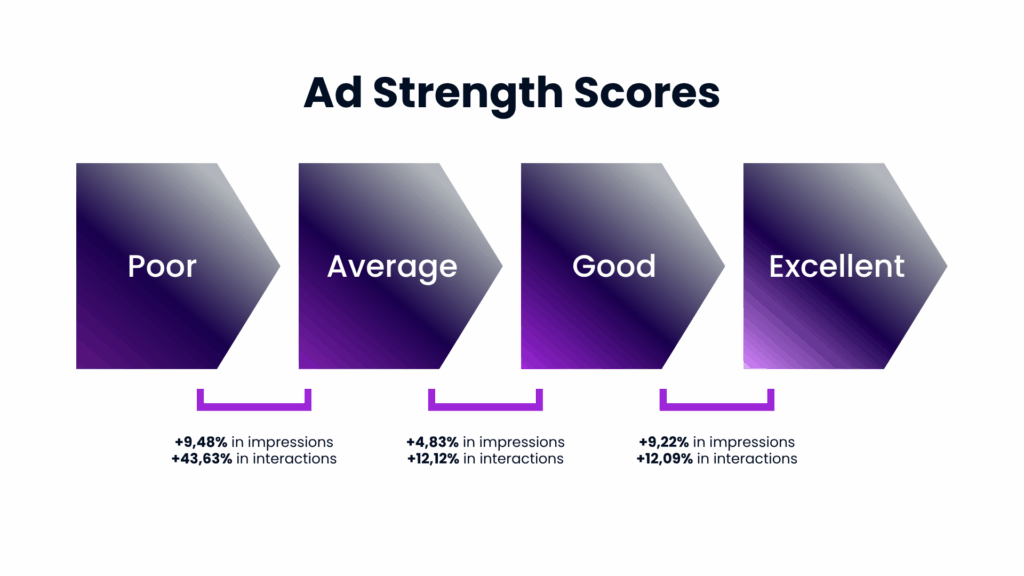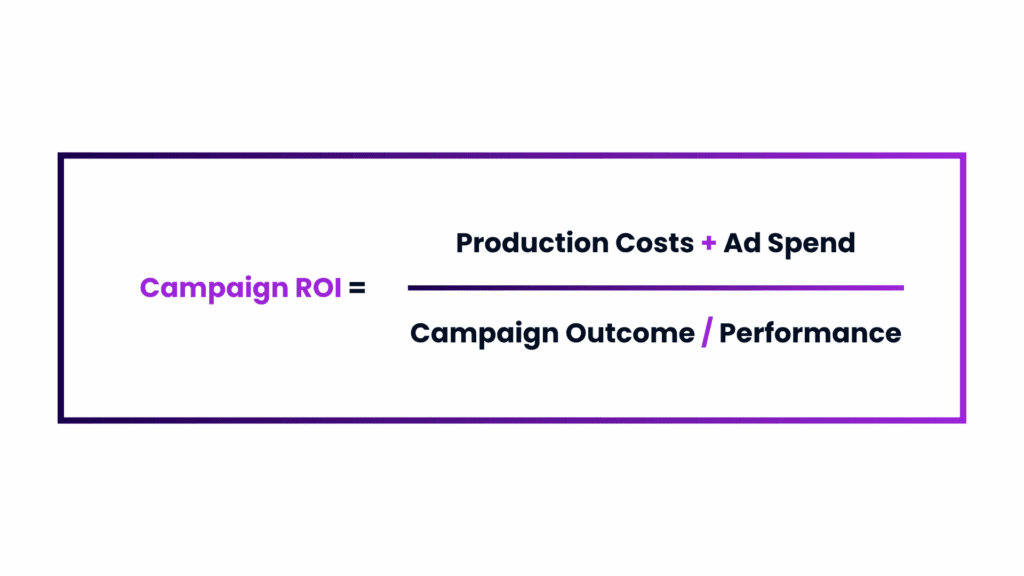Did you know we also have a 2025 edition? Read ‘5 Marketing Trends to Watch in 2025‘ here!
Renowned industry authorities like Forbes, Gartner, and Forrester annually scrutinise the horizon for Marketing Managers, forecasting the trends and challenges of the upcoming year. Their insights reveal a compelling narrative for 2024:
Relevant Industry Trends for 2024
- Gartner predicts that by 2026, a staggering 80% of creative talent will integrate Generative Artificial Intelligence (GenAI) into their daily workflows, facilitating more strategic endeavours.
- According to McKinsey, in 2021, a significant 71% of consumers anticipate personalised interactions from companies, underlining the increasing importance of tailored content.
- The demand for personalised and relevant content increases, while budgets and resources stay the same in 2024. This results in a Marketing Execution Gap.
Creative Production is Key
These trends underscore a growing emphasis on the quality, relevance, and discoverability of content in the dynamic marketing landscape of 2024 and beyond. Marketers are therefore compelled to prioritise metrics related to content production efficiency, engagement, and impact to ensure their strategies remain agile and effective amidst evolving consumer preferences and technological advancements.
We’ll highlight the 5 most relevant Creative metrics for 2024 in this blog:
- Content Engagement
- Ad Strength
- Budget
- Ability to React
- Time-To-Market
1. Content Engagement Metrics
Content engagement metrics are crucial for evaluating the effectiveness of marketing campaigns in capturing audience attention and fostering interaction. By understanding how audiences engage with content, marketers can tailor their strategies to optimise engagement and enhance overall campaign performance.
Understanding Audience-specific Engagement Metrics
Effective content engagement measurement goes beyond simple metrics like likes and shares. It involves analysing audience interactions such as comments, click-through rates, time spent on page, and conversion rates. These metrics provide valuable insights into audience preferences, behaviours, and interests, allowing marketers to refine their content strategies accordingly.
Strategies for Optimisation
To maximise content engagement, marketers should adopt strategies tailored to their target audiences. This involves creating relevant and compelling content that resonates with specific audience segments. By leveraging data-driven insights and segmentation techniques, marketers can personalise content to address the unique needs and preferences of each audience group.
Link to Personalisation
Personalisation plays a crucial role in enhancing content engagement. By implementing processes for creating personalised content experiences, marketers can improve engagement rates and foster stronger connections with their target audiences. However, the demand for personalised content from consumers and the actually ability for the marketing organisations to deliver that content, resulting a content bottleneck.
The importance of Creative Production Volume
Due to the content bottleneck, many companies may have access to abundant data for crafting personalised strategies, however, they often lack the production capacity to execute these strategies effectively. Therefore, investing in scalable content production capabilities is essential to realise the full potential of personalised marketing initiatives.
Simply put, knowing your audience is one thing, but having the capacity to translate that knowledge into compelling content is essential for driving meaningful engagement and conversions.
2. Ad Strength Score
Many Marketing Managers regularly look at engagement metics that are described above, such as CTRs, engagement and optimisation scores. However, Google has another important metric that is equally important to look at: Ad Strength Score.
Ad Strength Score Explained
Your ad strength score is essentially a measure of the overall effectiveness and relevance of your ad creative. It takes into account factors like relevance, diversity, and freshness of your ad assets to determine how well they resonate with your target audience. A higher ad strength score indicates that your ads are more likely to capture attention, engage users, and drive desired actions.

Relation to Creative Departments
According to insights from Google, there’s a clear correlation between asset volume and ad strength. Simply put, the more diverse and abundant your ad assets are, the higher your ad strength score is likely to be. This is because having a variety of assets allows advertisers to cater to different audience preferences, combat ad fatigue, and optimise ad performance over time.
By embracing diversity and freshness in your ad creative, you can elevate your ad strength score and unlock new levels of campaign performance and effectiveness.
3. Budget Metrics: Cost, ROI, and ROAS
Effective budget management is crucial for the success of marketing campaigns, requiring a keen understanding of key metrics such as Cost per Asset, Return on Investment (ROI), and Return on Ad Spend (ROAS). These metrics provide insights into different aspects of campaign performance and financial efficiency.
Understanding Cost per Asset
Cost per Asset measures the production expenses incurred for each marketing asset created. It reflects the financial investment required to generate content for campaigns. While creating more assets may lead to higher production costs, automation solutions offer a cost-effective way to produce a diverse range of assets without significantly increasing expenses.
Optimising ROI and ROAS
ROI evaluates the overall effectiveness of marketing efforts in generating revenue compared to costs, while ROAS specifically measures the revenue generated per dollar spent on advertising. Both metrics depend on the volume and quality of assets produced. Increasing asset volume can potentially enhance ROI and ROAS, but without efficient production processes, it may result in diminishing returns.

The Role of Efficient Asset Production
Efficient asset production processes, facilitated by automation, play a crucial role in optimising budget metrics. By streamlining content creation and reducing production costs, marketers can find the “sweet spot” where expenses align with campaign performance. This approach maximises ROI and ROAS, ensuring a positive return on investment while controlling costs effectively.
Choosing the Right Approach
The relevance of each metric depends on the specific goals and circumstances of the campaign. While Cost per Asset focuses on production expenses, ROI and ROAS provide broader insights into financial performance. Ultimately, creating more content helps in improving all three metrics by leveraging automation to increase asset volume efficiently.
4. Ability to React
The ability to adapt and refine content in-flight is a game-changer for marketers. Imagine pushing out 20 ads and realising that only 5 are performing exceptionally well. In such a scenario, you’d ideally want to create additional variations of those top-performing ads to capitalise on their success. However, to execute this effectively, you need a rapid content production process in place.
Spending budget where it matters most
According to insights from Google, a staggering 75% of campaign results are attributed to the creatives within them, while only 25% are attributed to campaign optimisation and targeting. Despite this, many companies tend to focus disproportionately on optimising targeting and overlook the critical role of creative content.
“Your creative are your differentiator. 25% of your ROI comes from targeting. 75% of your ROI comes from creative.”
Google
To stay ahead of the curve, marketers must prioritise the development of agile content production processes that enable rapid iteration and experimentation. This means investing in technologies and workflows that facilitate quick turnaround times without compromising on quality.
5. Time-to-Market
Closely related to the notion of ability to react, is time-to-market. In marketing, timing is everything. You could have the most compelling campaign strategy, but if your assets aren’t delivered on time, you risk missing out on valuable opportunities and wasting budget. The significance of timely asset delivery cannot be overstated, as it directly impacts the effectiveness of your campaigns.
Avoiding Budget Wastage
As highlighted by the scenario where marketing teams are left waiting for assets, delayed delivery not only hampers campaign performance but also leads to budget wastage. When assets are not available when needed, marketers may resort to suboptimal solutions or miss crucial promotional windows, resulting in diminished returns on investment.
Streamlining Creative Turnaround Time
To mitigate these risks and optimise time-to-market, organisations must focus on streamlining their creative turnaround time. By implementing efficient workflows, leveraging automation tools, and fostering collaboration between creative and marketing teams, businesses can expedite the asset production process and ensure timely delivery.
Strategies for Success
Strategies for reducing time-to-market include establishing clear timelines and milestones, prioritising tasks based on impact and urgency, and investing in technologies that facilitate rapid content creation and approval. By adopting these approaches, marketers can minimise delays, maximise campaign effectiveness, and ultimately drive better results.
Case Study: Voodoo
To vividly illustrate the practical implications of the 5 metrics and strategies discussed earlier, let’s delve into the success story of Voodoo, a leading mobile gaming company. This case exemplifies how the pursuit of increased content production capacity can profoundly impact campaign performance while simultaneously driving down costs.
Need For Time Savings
As a leading mobile gaming company, Voodoo faced challenges in creating a large volume of ad variations for multivariate testing to stay competitive. By adopting Storyteq’s template-based automation, Voodoo streamlined their ad production process, resulting in significant time savings and improved efficiency.
Creative Automation as Solution
With Storyteq, Voodoo was able to produce over 6,000 ad versions in three months, saving an estimated 550 days of production time. This increased content production capacity allowed Voodoo to respond quickly to market trends and consumer needs, ensuring relevant and engaging ads across multiple games and platforms. Additionally, Storyteq’s integration with digital asset management systems helped organise assets and reduce human error in the workflow.
Overall, Voodoo’s success with Storyteq highlights the importance of automation in scaling content production without increasing headcount. By leveraging technology to enhance efficiency and streamline workflows, companies like Voodoo can achieve better campaign performance while minimising production costs.
Conclusion
In this blog, we’ve explored a range of pivotal creative metrics that are shaping marketing strategies in 2024 and beyond. From content engagement metrics to ad strength scores, and from budget management to agility in content production, each metric plays a crucial role in driving campaign success and maximising ROI.
As marketers navigate the dynamic landscape of digital advertising, it’s imperative to prioritise these metrics in their 2024 strategies. By not only leveraging data-driven insights, but also actively embracing automation tools, marketers can optimise content production, enhance engagement, and ultimately drive better results for their campaigns.
Want to receive weekly tips on Creative Automation?
Then make to follow our expert, Rogier Ros, on LinkedIn! He shares his best insights, views on trends and example from practice on a weekly basis. Make sure to not miss it!
